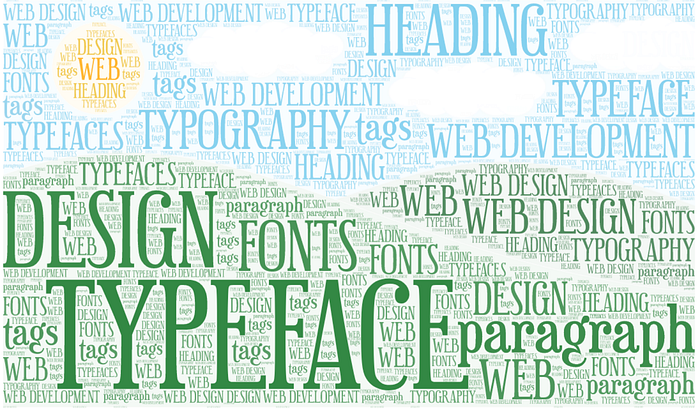Tips for Properly Using Web Fonts in Web Development and Design.
Web fonts are an important aspect of modern web design and development, as they allow web designers and developers to specify the fonts that should be used to render text on a website. Properly using web fonts can improve the aesthetics and readability of a website, as well as provide a more consistent and cohesive look and feel across different devices and platforms. There are several ways to use web fonts on a website, including self-hosting, using a web font service, or specifying system fonts.

Regardless of how you choose to use web fonts, it is important to consider the following factors to ensure that they are used effectively on your website:
- Limit the number of fonts used: It is generally recommended to use no more than two fonts except logos and other graphics on a website to keep the design simple and consistent. Using safety fonts, such as Arial, Helvetica, and Georgia is often a good choice for the body font on a website because they are likely to be installed on the majority of users’ devices. In addition, it is important to optimize the performance of your web fonts by reducing the number of requests made to the server and minimizing the size of the font files, especially if you are using a large number of fonts or font weights.
- Use other options to highlight text: In addition to using different fonts, you can use other techniques, such as capitalization, bolding, italicizing, adding letter spacing and text background color, to highlight or emphasize certain text. These options can be useful if you want to add emphasis without using a different font.
- Use headings appropriately: Headings are an important element of website hierarchy and it is recommended to use only one h1 heading on a page. The other heading levels, such as h2, h3, etc., should be used to create a hierarchy of subheadings. This helps to organize the content and makes it easier for users to understand the structure and relationships between different sections of the page.
For SEO, headings can help search engines understand the structure and content of a page, and they can also be used to help determine the relevance of a page to a particular search query. Proper use of headings can therefore help to improve the visibility of a website in search engine results.
For accessibility, headings can be used to help users with disabilities navigate a webpage and understand its content. Assistive technologies, such as screen readers, use headings to help users navigate to specific sections of a page or understand the hierarchy of the content. Proper use of headings can therefore make a website more accessible to a wider range of users. - Optimize line length and body size: The body size of the text on your website is important for readability, with a comfortable size for most fonts being around 16 pixels. To optimize the reading experience, the width of the text container should be between 1000 and 1200 pixels, or approximately 55 to 75 characters per line, which helps to keep the text easy to read and reduces the need for horizontal scrolling.
- Maintain consistent proportions: Keeping consistent proportions between different types of text, like headings, body text, and captions, is vital for creating a cohesive and harmonious design. It will also make it easier to manage the layout of your website on different devices by adjusting the body size of the text.
- Consider accessibility: Web fonts should be used in a way that is accessible to all users, including those with disabilities. This includes ensuring that the font is easy to read, using appropriate font sizes and colors, and providing alternative methods for users to access the content on your website if the web font is not available.
Overall, web fonts are a powerful tool for improving the appearance and usability of your website. By considering these factors and choosing the right web font solution for your project, you can ensure that your website looks great and is easy to use for all of your users. So, it is very important for web developers and designers to use web fonts properly in their projects.
